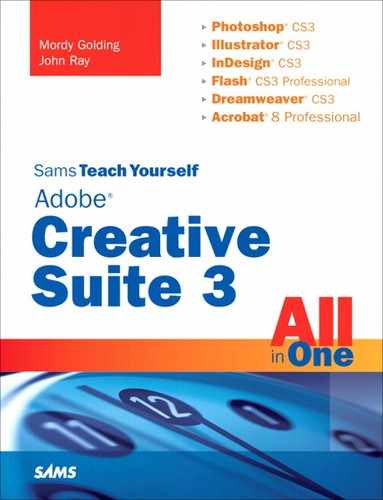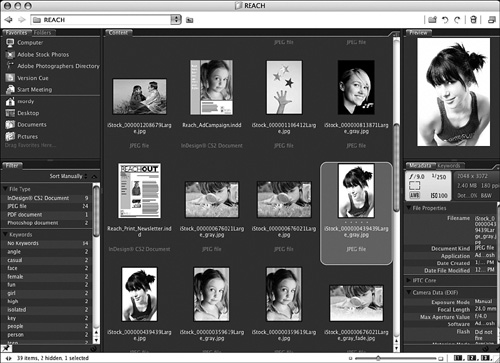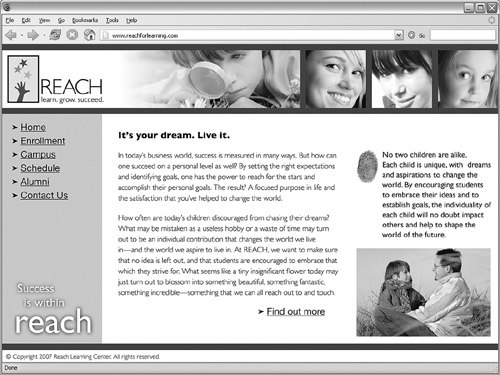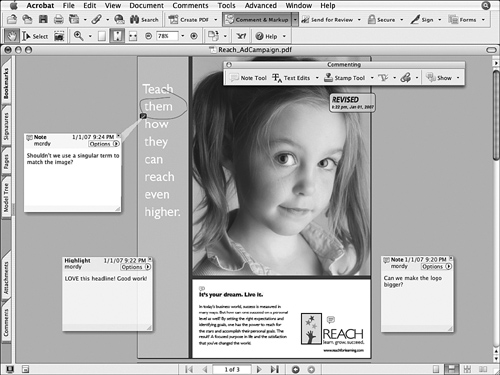Every child is an artist. The problem is how to remain an artist once he grows up. | ||
| --Pablo Picasso | ||
We’re all creative.
It doesn’t matter what job we do, but we all manage to be creative in one way or another—either in our job or just as a hobby. You don’t have to be a graphic designer or an artist to be creative, either. Lawyers put together graphic presentations to demonstrate a part of a case in court. Doctors use diagrams to describe medical procedures to patients. Business professionals create snazzy charts and graphs to demonstrate future growth of their company. Parents create scrapbooks for their kids about their trip to Disney World, and grandparents distribute cute photos of all the kids to the family.
It wasn’t that many years ago that professional layouts for books and magazines could be set only on special expensive typesetting machines and then mechanically put together using X-Acto blades and wax or rubber cement. Photo retouching was a costly expense that required the use of an airbrush, and printing your final art required a lengthy task of creating film color separations manually.
These days, the process is quite different. Pages for magazines are now completely laid out on a computer, incorporating high-end typography. Photographs can be combined or adjusted to just about anything, and digital presses can take files directly from the screen to the printed page. Additionally, the emergence of the Internet brings a new level of publishing and creativity to the forefront.
Technology plays a large part in the way people are creative. There are digital cameras, scanners, computers, digital printers, pressure-sensitive graphics tablets, and more. These technologies open the door to allow people to explore new ways of expressing their creativity. We all have a creative mind inside of us, and these items—along with the software that takes the most advantage of them—can help us to not only express those ideas, but do it faster and more efficiently, and maybe even have some fun in the process.
The catch, of course, is learning how to use the technology available to you to express your creativity. Think of design software as a set of tools you can use. Just as an artist may have paintbrushes, pastels, pencils, erasers, scissors, glue, or glitter (my favorite messy creative item), the Adobe Creative Suite serves as the tools to express your creativity on your computer. As a creative individual, you’ll find that this knowledge gives you an edge over the competition.
Throughout this book, you’ll learn what these tools are, when you should use them (and when you shouldn’t), and how to use them.
Adobe Creative Suite 3 Design Premium is made up of several components, each with its own set of tools that excel at specific tasks. To get a better understanding of what’s included in Adobe Creative Suite 3, let’s discuss each of the components and what its primary function is.
Adobe Bridge is an application that enables you to browse files visually (see Figure 1.1) and perform certain tasks that span several Creative Suite applications. From setting global color-management settings across all Suite applications at once, to performing scripts and automated tasks on files, to purchasing and downloading stock photos, Bridge acts as a central access point to all of the applications in Adobe Creative Suite 3.
Photoshop is a pixel-based program (we’ll talk more about this in Chapter 2, “So Many Applications: Which One to Use?”) that excels at working with photographs and illustrations with painterly effects. Most noted for its capability to manipulate photos (see Figure 1.2), it is also used for designing web graphics.
Illustrator is a vector-based program (more on this in Chapter 2) that excels at creating illustrations (see Figure 1.3), logos, maps, signs, and more. Illustrator can also serve as a single-page layout tool for creating ads and posters, and for designing web pages.
InDesign is a page-layout program that enables you to composite or put together entire brochures or booklets (see Figure 1.4) and even author-interactive PDF files. Robust tools such as table editors and master pages enable designers to easily compose pages and designs.
Flash is an interactive design program that allows you to build animations, online games, and websites (see Figure 1.5). Equipped with a timeline and a full scripting language called ActionScript, Flash has become extremely popular not only for developing cool content for the Web, but also for online games, user interfaces, and cell phone graphics.
Dreamweaver is a web-publishing program that allows you to publish and manage websites (see Figure 1.6). You can use the HTML editor to lay out individual pages of a site, as well as set up complex database-driven pages. Server-management tools and FTP functionality enable you to easily update and maintain your websites.
Acrobat is a tool used for working with PDF (Portable Document Format) files. You can mark up and review PDF files with useful annotation tools, making it easy to get feedback from clients or co-workers (see Figure 1.7). Acrobat can also be used for filling out forms, applying digital signatures, preflighting files for printing, and previewing color separations onscreen. In addition, a new component called Acrobat Connect allows you to have meetings by sharing your screen with others over the Internet.
In Chapter 3, “The Game Plan: Developing a Workflow,” we’ll talk a lot more about PDF files and how they are used.
Adobe Creative Suite 3 is available in a variety of configurations. This book covers Adobe Creative Suite 3 Design Premium and Adobe Creative Suite 3 Design Standard, although you might find much of the content useful in other versions of the suite as well. Here is a short description of each of the available configurations.
Containing full versions of Bridge, Photoshop Extended, Illustrator, InDesign, Flash Professional, Dreamweaver, and Acrobat Professional, Adobe Creative Suite 3 Design Premium is a jam-packed collection of tools used for print and web-based publishing.
Containing full versions of Bridge, Photoshop, Illustrator, InDesign, and Acrobat Professional, Adobe Creative Suite 3 Design Standard is focused on serving the needs of print-based publishing.
Containing full versions of Bridge, Photoshop Extended, Illustrator, Flash Professional, Dreamweaver, Fireworks, Contribute, and Acrobat Professional, Adobe Creative Suite 3 Web Premium is a complete collection of tools for web development and publishing.
Containing full versions of Bridge, Flash Professional, Dreamweaver, Fireworks, and Contribute, Adobe Creative Suite 3 Web Standard is focused on serving the needs of web-based publishing.
Containing full versions of Bridge, Photoshop Extended, Illustrator, Flash Professional, Premiere Pro, After Effects, and Soundbooth, Adobe Creative Suite 3 Production Premium is a robust collection of tools for video publishing.







